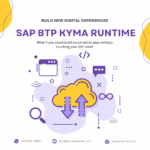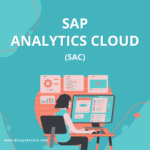In today’s fast-paced digital landscape, organizations are constantly seeking ways to optimize their operations and improve efficiency. One of the most effective solutions to achieve this is through SAP Cloud Platform Integration (CPI). This powerful tool allows businesses to seamlessly integrate various systems, applications, and data sources, ensuring smooth workflows and enhanced collaboration.
What is SAP CPI Integration?
SAP Cloud Platform Integration (CPI) is a cloud-based integration service designed to connect on-premise and cloud-based applications in real-time. It offers a comprehensive set of pre-built connectors, templates, and tools to facilitate the integration of various systems, enabling organizations to streamline their processes, enhance data visibility, and improve overall productivity.
Key Benefits of SAP CPI Integration
Seamless Data Flow
One of the primary advantages of SAP CPI is its ability to ensure a seamless flow of data between different systems. By integrating various applications, businesses can eliminate data silos, reduce redundancy, and enhance data accuracy.
Real-Time Processing
With SAP CPI, organizations can benefit from real-time data processing. This feature allows businesses to make informed decisions based on up-to-date information, ultimately leading to improved operational efficiency.
Flexibility and Scalability
SAP CPI is designed to adapt to the ever-changing needs of businesses. Whether you’re integrating a new application or scaling your existing systems, SAP CPI offers the flexibility to grow alongside your organization.
Cost-Effectiveness
Implementing SAP CPI can lead to significant cost savings. By automating manual processes and reducing the need for multiple point-to-point integrations, organizations can lower operational costs and allocate resources more efficiently.
Enhanced Collaboration
With improved data visibility and accessibility, SAP CPI fosters collaboration across teams and departments. This enhanced communication can lead to faster project completion times and more innovative solutions.
Use Cases of SAP CPI Integration
Integrating SAP and Non-SAP Systems
Many organizations use a mix of SAP and non-SAP applications. SAP CPI makes it easy to integrate these systems, allowing for a unified approach to data management and business processes.
Cloud-to-Cloud Integrations
As businesses increasingly adopt cloud solutions, integrating multiple cloud applications becomes essential. SAP CPI enables smooth connections between various cloud services, enhancing overall functionality.
IoT Integrations
With the rise of the Internet of Things (IoT), organizations are looking for ways to connect IoT devices to their existing systems. SAP CPI provides the tools necessary for these integrations, enabling businesses to leverage IoT data for better decision-making.
Getting Started with SAP CPI Integration
Implementing SAP CPI Integration may seem daunting, but with the right approach, it can be a smooth process:
Define Your Integration Requirements
Start by identifying the systems and applications you wish to integrate, and determine the specific requirements for each integration.
Leverage Pre-Built Content
SAP CPI offers a range of pre-built connectors and templates that can accelerate the integration process. Utilize these resources to save time and reduce complexity.
Monitor and Optimize
After implementing your integrations, continuously monitor their performance. Use analytics tools to identify areas for improvement and optimize your integrations over time.
Conclusion
SAP CPI Integration is a game-changer for organizations looking to enhance their operational efficiency and streamline their processes. By leveraging the power of SAP CPI, businesses can ensure seamless data flow, improve collaboration, and make informed decisions based on real-time information.











